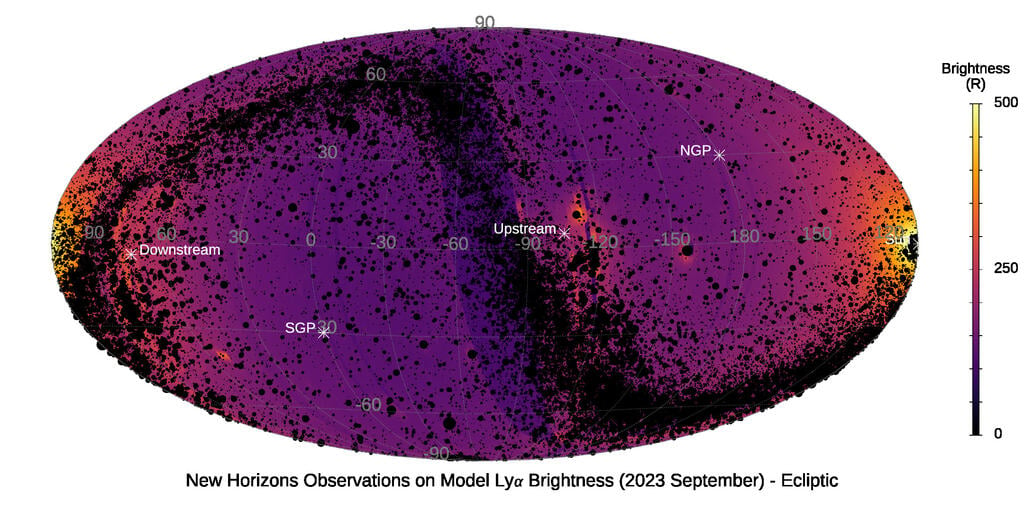New Horizons' primary mission is complete. It's already completed its pass through the Pluto system and even stopped by 486958 Arrokoth, a Kuiper belt object on its way out of the solar system. But that doesn't mean it's done providing new scientific insights. A new paper looks at data collected by its ultraviolet spectrograph, which looked at one particular wavelength and helped provide context to a few different questions about the solar system.
The wavelength, known as the Lyman-alpha wavelength, is 121.567 nm in a vacuum. It was originally named after Theodore Lyman, who discovered spectral lines at specific points in the spectrum, now called the Lyman series. The "alpha" comes from this spectrum, representing a particular change in energy states. But both the actual wavelength value and the genesis of its name aren't as important as what Lyman-alpha radiation actually measures.
Hydrogen emits ultraviolet light at this spectrum/ when its electron moves from one orbital to another. Specifically, Lyman-alpha represents the wavelength at which hydrogen emits photons if its paired electrons go from the second-lowest energy state to the lowest. For those who remember high school chemistry, this can be thought of as an electron going from orbital n=2 to orbital n=1. Importantly, hydrogen can also scatter photons at this wavelength and emit them, moving particles at these wavelengths even more indicative of the presence of hydrogen.
Fraser discusses some of the findings from New Horizons during its primary mission.
Alice, the colloquial name for the ultraviolet spectrograph onboard New Horizons, can detect photons at those wavelengths. After its primary mission was complete, its operators used it to scan around 83% of the sky in 2023. After subtracting out Lyman-alpha radiation contributed by our Sun, the researchers found an astonishing 10x increase in the radiation levels they observed compared to other estimates.
They focused on one cause—a "shell" of hydrogen surrounding the star. According to theory, it was formed by nearby supernovae millions of years ago and has essentially just been stuck in the general area since then. These hydrogen atoms stay stationary where they are but form a "hot" protective bubble around the Sun and our planets, which is only visible by something as far away as New Horizons.
However, there was something else that New Horizons didn't see - a "hydrogen wall". This theorized area was thought to include many hydrogen atoms at the edge of our heliosphere. While they might have been gravitationally attracted to the Sun, the solar wind pushed them out, causing them to pile up in a "wall" like structure just outside of the area where the solar wind could push them around, but not close enough to begin falling into the solar system itself.
Fraser discusses some potential future use cases for New Horizons
Theoretically, the hydrogen atoms in the wall would also emit Lyman-alpha photons, but New Horizons didn't see any, putting a dent in that theory. That doesn't mean it rules out the possibility entirely, just that it isn't a significant source of hydrogen emissions.
As New Horizons continues on its journey out of the solar system, it will give us an even more unique insight into what space is like at the outer reaches of our Sun's gravitational pull. There's still more science to do, even if the probe takes longer and longer to return to us.
Learn More:
SwRI -New Horizons observations lead to first Lyman-alpha map from the galaxy
G.R. Gladstone et al -The Lyman-alpha Sky as Observed by New Horizons at 57 AU
UT -The JWST Solves the Mystery of Ancient Light
UT -New Horizons is Funded Through the Decade. Enough to Explore Another Kuiper Belt Object
 Universe Today
Universe Today
